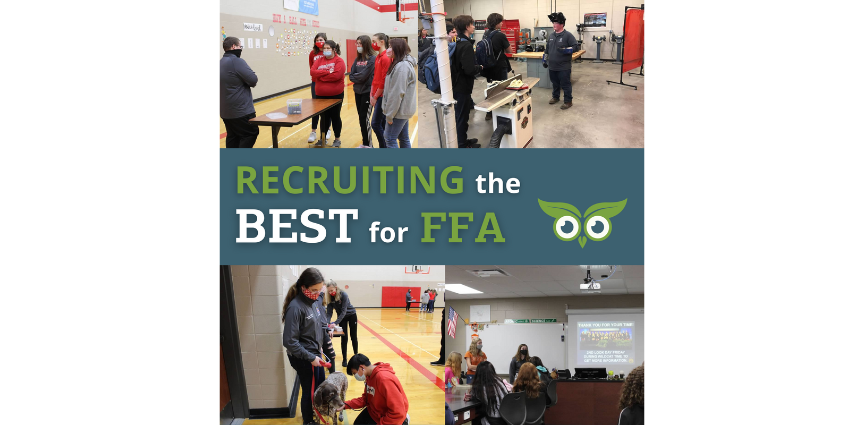
Recruitment can be a tricky thing.
You have to convince 14-17 year old students to take a class that (in many cases) they do not need to graduate.
You have to convince students with a “too cool for school” mentality to join FFA and dedicate countless out-of-school hours to FFA events and meetings.
And you often only have a short period of time to speak to all of them on why this unique program can drastically change their lives.
For me in Ohio, 100% of my students in agriculture classes were also FFA members. This required my course recruitment to also align with my FFA recruitment.
And typically this recruitment occurred in January when students were picking their class lists for the following year.
Here are a few of the techniques I used to approach recruitment:
-
LETTERS & BROCHURES: The first week back after Christmas break, I sent a Parent Letter and an Ag Ed Brochure to the parents of 8th grade students explaining the program; I found parents are a big deciding factor in the courses students take. Since my program was 9-12 grade, I really focused my attention on the 8th grade students because if I didn’t recruit them in middle school, I typically wouldn't recruit them in future years.
-
PRESENTATIONS: My officers would visit all 8th grade classrooms and explain the program using this Ag Ed Presentation. My school had a Wildcat Time at the end of each day for 30 minutes so it was easy to just present to 8th graders during this time. Officers gave each student a FFA water bottle and placed this T-Shirt Raffle Label under a few students’ chairs who would receive a FFA t-shirt. These two techniques allowed us to recruit even after the presentations were completed.
-
2ND LOOK DAY: The Friday before students formally enrolled in courses, we conducted a 2nd Look Day where all 8th grade students came to the Ag Ed Department to learn more about the program. FFA officers separated students into stations and middle school students rotated through these stations to learn about different parts of the program. Stations included: (1) animal health, (2) floral design, (3) welding, (4) FFA leadership, (5) mock CDEs, but could include anything that provides students a glimpse into the program.
This multi-step approach to recruitment greatly expanded our FFA chapter from 70 to over 120 students when I transitioned out of the classroom. It also allowed us to target our recruitment efforts to recruit over 75% of the high school to join agriculture education, including the majority of students in the top 10 of each class.
This rippling effect of better recruitment efforts positively impacted our results in CDEs and LDEs, the National Chapter Award program, proficiencies, and so much more!
I hope these techniques allow you to increase your recruitment efforts this year! As always, reach out to info@owlsnestresources.com with any questions.
